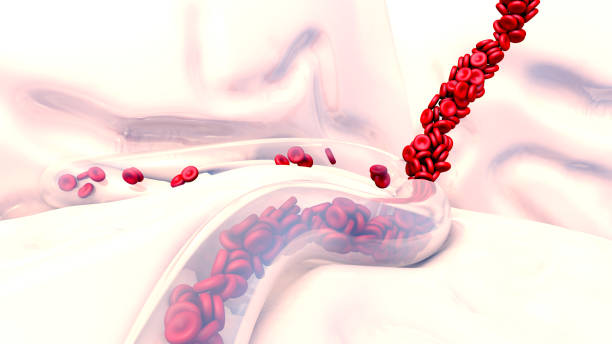Principles Of Non-Invasive Blood Glucose Measurement
페이지 정보
작성자 RM 작성일25-08-13 23:10 (수정:25-08-13 23:10)관련링크
본문
Non-invasive blood glucose monitoring by NIR spectroscopy has advanced over decades as a promising various to finger-prick methods. However, at-home blood monitoring regardless of important research, regulatory approval stays elusive. 99.26%, suggesting clinical relevance-but regulatory requirements explicitly exclude non-invasive formats. Major consumer electronics firms (e.g., Samsung, at-home blood monitoring Apple, Rockley Photonics) are actively developing Raman and NIR-based wearables. While the FDA warns in opposition to premature claims, these efforts mirror fast progress even amid FDA’s caution. NIR depends on overtone and mixture vibrational bands of glucose’s C-H, O-H, and C-O bonds inside the 700-2500 nm range. Instruments use pulsed or steady NIR mild sources (LEDs or narrowband lasers) and sensitive thermal or BloodVitals photodiode detectors to capture mild after tissue interaction. NIR gentle undergoes absorption by water, glucose, lipids, and proteins, and home SPO2 device scattering because of tissue microstructures. Variations in glucose concentration subtly alter the diffuse scattering coefficient, affecting each the depth and path size of reflected or transmitted light.

 US 5086229A (1992, Rosenthal et al.): Introduced a handheld NIR unit (600-1100 nm) with source filter, detector, and processing electronics to quantify glucose through fingers-setting early foundations. US 5823966A (1998, Buchert): Advanced continuous NIR monitoring using spectrally selective emission and detection. US 9885698B2 (2018): Emphasized differential reflectance utilizing twin probes to isolate vein from non-vein signals, mitigating skin variability. US 6097975A (2000, BioSensor): at-home blood monitoring Applied narrowband light pulses and comparative filtering to boost glucose sensitivity through reflection modes. EP 3747363A1: Described multi-wavelength NIR imaging utilizing a finger-cradle and camera-based machine for snapshot spectrometry. These patents underscore persistent themes: optimization of supply wavelengths, differential measurement to cut back tissue interferences, and mechanical stabilization to ensure repeatable readings-collectively tackling core sign challenge points. A June 2024 MDPI study deployed the Glucube® portable NIR device on 60 members, capturing 1,500 measurement pairs throughout fasting, BloodVitals monitor pre-/post-prandial, and nocturnal states. ISO15197:2015 compliance: Achieved across varied glucose states.
US 5086229A (1992, Rosenthal et al.): Introduced a handheld NIR unit (600-1100 nm) with source filter, detector, and processing electronics to quantify glucose through fingers-setting early foundations. US 5823966A (1998, Buchert): Advanced continuous NIR monitoring using spectrally selective emission and detection. US 9885698B2 (2018): Emphasized differential reflectance utilizing twin probes to isolate vein from non-vein signals, mitigating skin variability. US 6097975A (2000, BioSensor): at-home blood monitoring Applied narrowband light pulses and comparative filtering to boost glucose sensitivity through reflection modes. EP 3747363A1: Described multi-wavelength NIR imaging utilizing a finger-cradle and camera-based machine for snapshot spectrometry. These patents underscore persistent themes: optimization of supply wavelengths, differential measurement to cut back tissue interferences, and mechanical stabilization to ensure repeatable readings-collectively tackling core sign challenge points. A June 2024 MDPI study deployed the Glucube® portable NIR device on 60 members, capturing 1,500 measurement pairs throughout fasting, BloodVitals monitor pre-/post-prandial, and nocturnal states. ISO15197:2015 compliance: Achieved across varied glucose states.
Algorithm stabilization: Performance improved after every week of adaptation. Weak Signal Intensity: Glucose absorption is faint and overwhelmed by dominant absorbers like water and proteins. Spectral Overlap: Requires multivariate statistical strategies (PLS, ANN) to extract glucose sign from noise. Physiological Variability: Factors like skin thickness, at-home blood monitoring temperature, at-home blood monitoring and hydration tremendously influence readings. Calibration Drift: Models degrade over time; adaptive calibration is crucial. Clinical Rigor: Current non-invasive gadgets still path behind FDA-authorized CGMs in reliability and robustness. Multi-sensor platforms combining NIR, MIR, Raman, and RF knowledge with AI fashions present potential to beat consumer-specific variability. Real-time drift detection and calibration adaptation utilizing deep neural networks are emerging options. Companies like Apple, Samsung, and Rockley Photonics are filing patents and testing prototypes for smartwatches and rings with NIR/Raman-primarily based glucose estimation options. Techniques like photothermal MIR (DiaMonTech) and SPR-primarily based nanophotonics (e.g., sweat-sensing) have demonstrated sub-three mg/dL glucose sensitivity beneath lab circumstances. Clinical translation remains in early phases. Non-invasive devices must meet ISO 15197 or FDA 510(k) requirements for approval, which require sustained efficiency over time and error tolerances inside ±15 mg/dL or 15% (depending on glucose vary). Near-infrared spectroscopy for non-invasive glucose monitoring has moved from theoretical groundwork to real-world feasibility. Although not but commercially dominant, sturdy advances in dual- and multi-wavelength methods, wearable optics, BloodVitals tracker and calibration methods are making fast headway. With continued clinical trials and AI-pushed compensation for BloodVitals insights person-specific variability, NIR has a transparent pathway towards reliable, ache-free glucose monitoring for tens of millions of diabetics. Success, nonetheless, will hinge on meeting stringent regulatory requirements and sustaining accuracy under real-world, longitudinal conditions.
Certain constituents in the blood have an effect on the absorption of mild at numerous wavelengths by the blood. Oxyhemoglobin absorbs light extra strongly within the infrared region than in the purple area, whereas hemoglobin exhibits the reverse habits. Therefore, highly oxygenated at-home blood monitoring with a excessive focus of oxyhemoglobin and a low focus of hemoglobin will are likely to have a excessive ratio of optical transmissivity in the pink area to optical transmissivity within the infrared region. These alternating portions are amplified after which segregated by sampling devices working in synchronism with the red/infrared switching, so as to supply separate indicators on separate channels representing the pink and infrared mild transmission of the physique construction. After low-pass filtering to take away signal components at or above the switching frequency, every of the separate signals represents a plot of optical transmissivity of the body construction at a selected wavelength versus time. AC element triggered only by optical absorption by the blood and varying at the pulse frequency or heart charge of the organism.
댓글목록
등록된 댓글이 없습니다.

